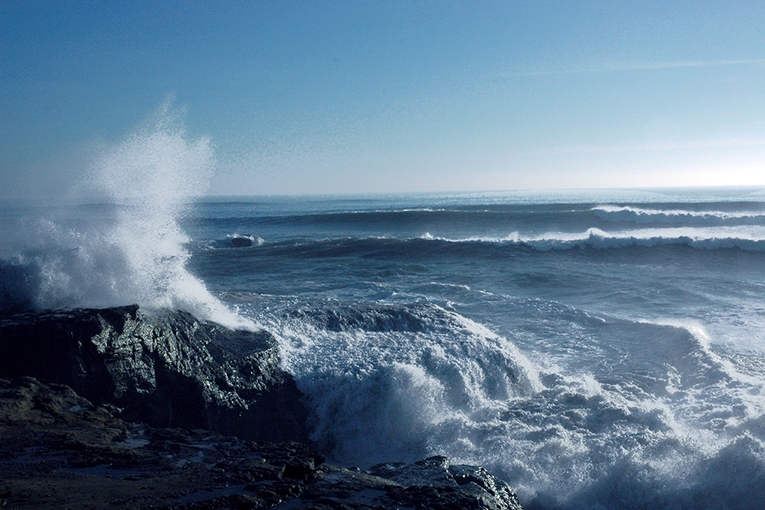What Causes Tides? Understanding the Rhythmic Dance of the Oceans
The answer lies in the powerful interplay of gravity, inertia, and the unique celestial dance between our planet and its celestial companions.

Our planet’s oceans are in a constant state of motion, their rhythmic rise and fall a familiar sight along coastlines. This ebb and flow, known as tides, has captivated humanity for millennia, shaping our understanding of the interconnectedness between Earth, Moon, and Sun. But what unseen forces orchestrate this watery ballet? The answer lies in the powerful interplay of gravity, inertia, and the unique celestial dance between our planet and its celestial companions.
The Moon’s Gravitational Embrace: The Primary Conductor
The Moon, Earth’s closest celestial neighbor, plays the starring role in the tidal drama. Its immense gravity exerts a pull on Earth’s oceans, distorting their spherical shape. The side of the Earth facing the Moon experiences the strongest gravitational attraction, causing the water to bulge outward. This bulge, known as a high tide, is a consequence of the Moon’s pull attempting to directly accelerate the water towards it. However, the story doesn’t end there.
The Inertia Factor: A Balancing Act
Earth spins on its axis, and the water on its surface participates in this rotation. As the Earth rotates, the water on the side facing away from the Moon tends to resist being pulled directly towards it due to inertia, the tendency of an object to remain in its state of motion. This inertial effect causes another bulge to form on the opposite side of the Earth. Interestingly, this bulge also represents a high tide, even though it’s on the side facing away from the Moon.
The explanation lies in the fact that the water on the far side is momentarily “falling behind” Earth’s rotation as the planet spins beneath it. This creates a relative bulge compared to the average water level. The combined effect of the Moon’s direct pull and the inertial bulge on the far side results in two high tides occurring in different locations on Earth roughly every 12 hours, as different parts of the planet rotate towards and away from the Moon.
The Sun’s Subtle Sway: A Supporting Performer
While the Moon is the primary driver of tides, the Sun also plays a supporting role. The Sun’s gravity, though less potent than the Moon’s due to its greater distance, also exerts a pull on Earth’s oceans. When the Sun and Moon are aligned, their gravitational forces combine, leading to particularly high tides known as spring tides. Conversely, when the Sun and Moon are at right angles to each other, their pulls partially cancel each other out, resulting in lower high tides and higher low tides, known as neap tides.
The Sun’s influence on tides highlights the importance of the celestial configuration. The relative positions of the Sun, Moon, and Earth significantly impact the magnitude of the tidal bulges.
Beyond Gravity: The Complexities of Tidal Dynamics
The story of tides is more nuanced than just the interplay of gravity and inertia. Earth’s geography also plays a crucial role. The shape of coastlines, the presence of continental shelves, and the depth of the ocean floor all influence how tidal bulges manifest in specific locations. For instance, funnel-shaped bays can amplify the tidal range, leading to dramatic high tides and low tides, as seen in the Bay of Fundy in Canada.
Furthermore, the Earth is not a perfect sphere, and its oceans are not uniformly distributed. These factors contribute to local variations in tidal patterns, making tide prediction a complex but crucial task for coastal communities.
Understanding Tides: A Tapestry of Influences
While the Moon’s gravity is the primary driver, tides are a complex phenomenon shaped by a confluence of forces. Earth’s rotation, the Sun’s influence, and the intricate interplay with coastal geography all contribute to the rhythmic rise and fall of our oceans. By unraveling the intricate dance between these celestial bodies and our planet, we gain a deeper appreciation for the dynamic nature of our oceans and the interconnectedness within our solar system.
This understanding of tides has practical applications as well. Accurate tide predictions are essential for safe navigation, coastal resource management, and even the planning of recreational activities like surfing or fishing. As we continue to explore the intricate dance of tides, we gain a greater appreciation for the ever-changing seas that shape our planet’s coastlines.






